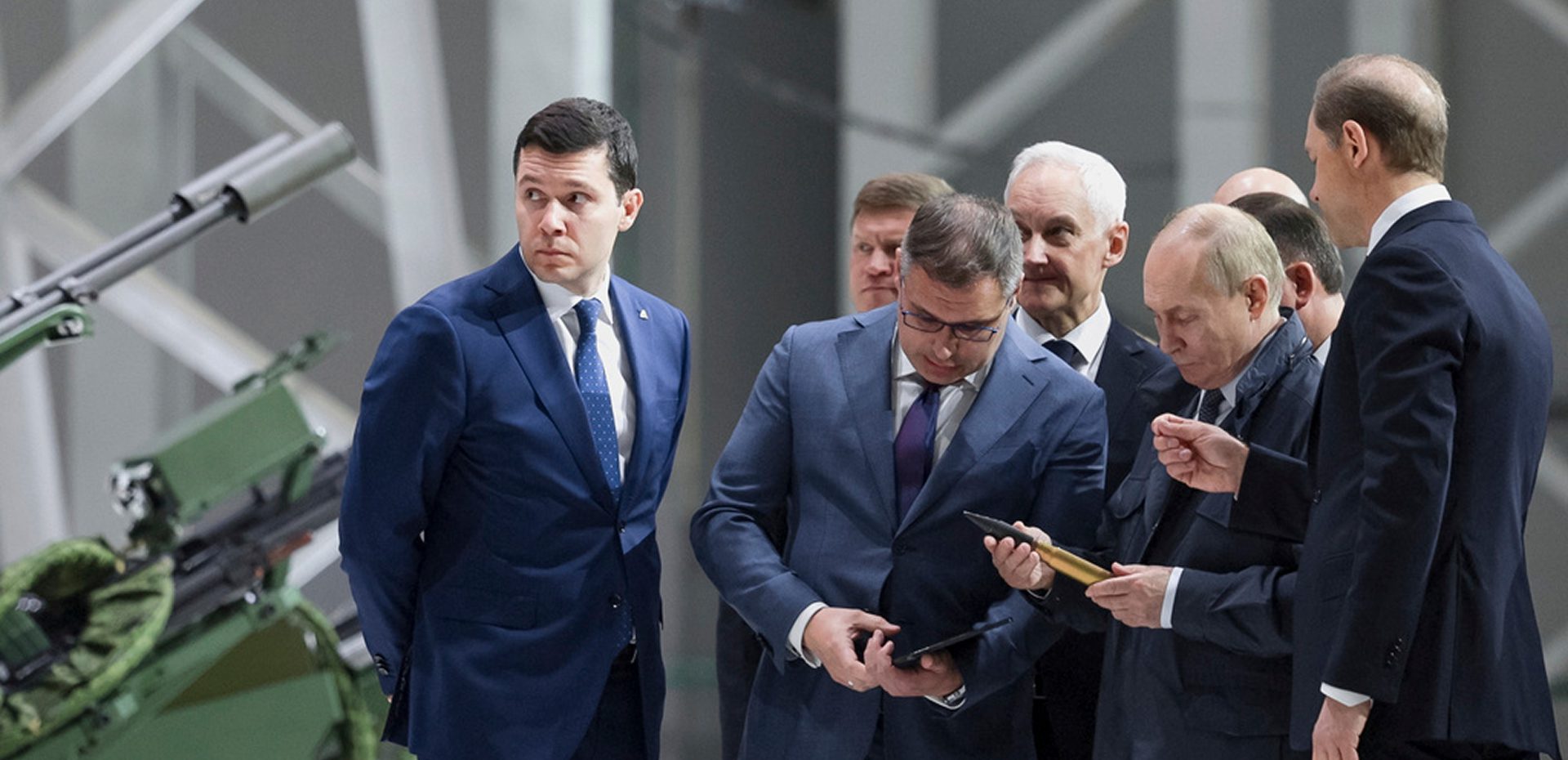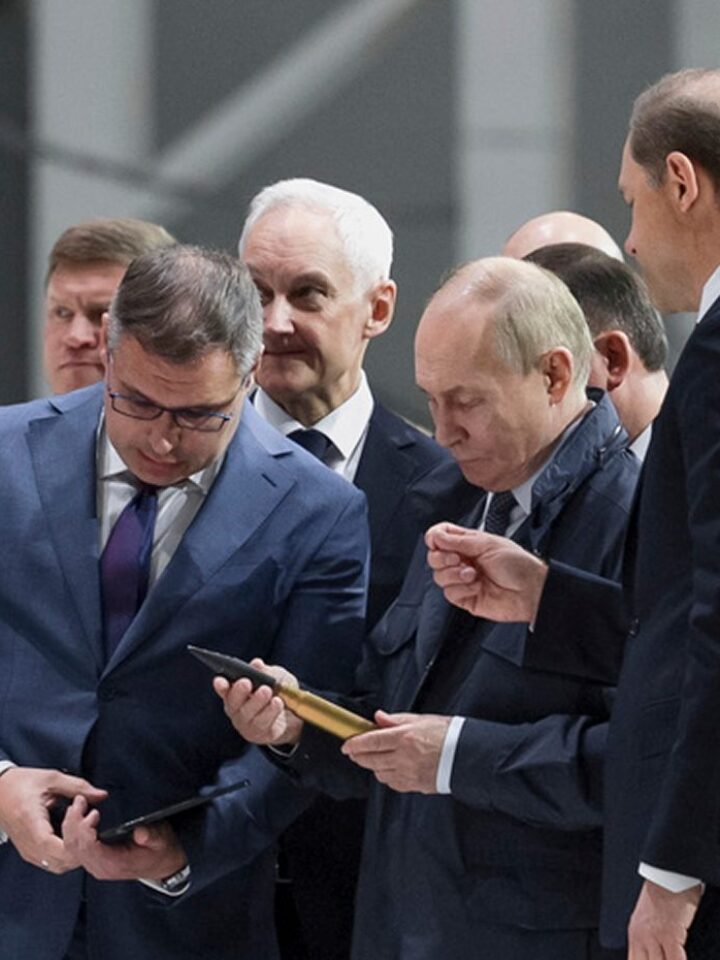Russia’s federal budget for 2026–2028 reflects economic stagnation, with military expenditure remaining a priority and the fiscal burden on the population increasing. The formal reduction in defence spending results from accounting techniques rather than a lack of funds. In Russian society, there are still more economic and social beneficiaries of the war than losers, but stagnation may eventually reverse this trend.
Russia’s economy is stagnating, but do not expect collapse
The Russian government has submitted the draft federal budget for 2026–2028 to the State Duma. In 2026, expenditure is set at 44.1 trillion roubles, revenue at 40.3 trillion roubles, and the deficit at about 3.8 trillion roubles (1.6 per cent of GDP). The armed forces and security services remain the priority: in 2026, defence spending will fall only symbolically (about 13 trillion roubles compared with 13.5 trillion in 2025), while defence and ‘national security’ together will account for around 38 per cent of total expenditure (about 7 per cent of GDP). To reduce the deficit compared with the current year (2.6 per cent of GDP), the Ministry of Finance has proposed raising VAT from 20 to 22 per cent from 1 January 2026, cutting benefits for small and medium-sized businesses, and lowering government spending as a share of GDP.
The budget parameters reflect the current state of the Russian economy: stagnation. The Ministry of Economic Development forecasts GDP growth of 1.3 per cent in 2026. While the Russian leadership speaks of ‘managed cooling’ after the rapid growth of 2023–2024, in reality it is a matter of exhausted potential.
In the fourth year of the war, the economy faces three key structural constraints. First, the reallocation of resources towards military spending, which accounts for a third of the budget, limits the scope for developing civilian industries. In the first half of 2025, only two sectors – agriculture and manufacturing – showed sustained growth. Even the defence industry, however, is projected to slow in 2026: whereas in 2023–2024 the output of weapons and ammunition grew by 20–30 per cent annually, growth is now expected to be only 5–7 per cent.
Second, the high key interest rate constrains lending and investment1. The Indirect Investment Index of the Centre for Macroeconomic Analysis and Forecasting has fallen by 9 per cent since October 2024, and by 11.5 per cent from its peak in the summer of 2023, effectively returning to the level of early 2019.
Third, stable but non-rising oil prices limit the revenue base of the budget. With the gradual lifting of OPEC+ restrictions in the second quarter of 2025, the extractive sector shifted from contraction to growth (+1.45 per cent for the quarter, or about 6 per cent year-on-year). However, this level remains below that of 2014 and 8.3 per cent lower than the historic peak of late 2019-early 2020.
The forecast for 2026 suggests further growth in oil and gas output, with a significant share – about half of the increase in oil and 40 per cent of the increase in gas – expected to go for export. Exports of oil products, by contrast, will see little growth: it is likely that Ukrainian drone strikes on refineries have limited processing capacity, and recovery has been slow. Yet because the current Russian tax regime makes crude oil exports more profitable for companies, reduced refining does not translate into budgetary losses. At the same time, prospects for further revenue growth are limited: even under the 10-per-cent rouble depreciation assumed in the Ministry of Economic Development’s forecast, oil and gas revenues and customs duties will raise budget income only marginally.
The effectiveness of Western sanctions remains limited. Their initial impact in 2022 caused a sharp economic contraction, but Russian businesses have since adapted: alternative trade routes have been established, exports to Asia expanded, and a ‘shadow fleet’ created to circumvent the oil price cap. Energy sanctions have had only a minor effect on federal budget revenues; agreements within OPEC+, which restricted Russia’s oil production and exports, have had a far greater impact.
Overall, in 2026 oil and gas revenues will account for just over 22 per cent of the federal budget. It is therefore unlikely that even much harsher energy sanctions would significantly undermine the Kremlin’s ability to continue financing the war.
Has the Kremlin run out of money for the war?
The formal reduction of military spending in the draft budget for 2026 does not mean that the Kremlin is running out of funds. Rather, it is a technical adjustment linked to budget presentation procedures.
Since early 2023, the detailed structure of expenditure has been classified, and the regulatory framework allows the government to reallocate funds between budget lines without amending the budget law. In addition, extra revenues may be directed straight into the Reserve Fund of the President of the Russian Federation and spent at president’s discretion without parliamentary approval. If the war in Ukraine continues throughout 2026, actual military spending will be significantly higher than the figures presented in the draft budget.
It can be assumed that the Kremlin agreed to this presentation of the budget on the basis that the Ministry of Finance would advance part of the military spending to December this year. An alternative explanation is that the final decision on the actual military budget will be taken in mid-2026: if the war in Ukraine ends, expenditure can be kept at a lower level; if it continues, the Ministry of Finance will increase the deficit in the second half of the year.
It should be noted that a significant increase in military spending is not only impossible today – the economy is already operating at full capacity – but also unnecessary: the intensity of hostilities and the associated requirements remain stable. Sustaining the war at the current level of expenditure (6.3–6.5 per cent of GDP) allows the Kremlin to prolong the conflict without placing an additional burden on the budget.
Public sentiment
Russian society has largely adapted to economic constraints. According to the Levada Center, in July 2025 the share of those satisfied with their lives reached its highest level since monitoring began in 1993 – 57 per cent – while the number of those dissatisfied fell to 11 per cent. The consumer sentiment index rose from 86 points in April 2022 to 117 points in June 2025, but dropped to 110 points in August. At the same time, the share of those whose material situation is worsening has been rising, while the share of those reporting an improvement in their family’s financial position has begun to decline after a long period of growth. This may signal the arrival of a turning point: optimism had been building over the past three years, but by late summer 2025 it began to weaken.
At the same time, the fundamentals of Russians’ material situation have changed little over the past two and a half years. The majority (about 70 per cent) live ‘at subsistence level’: their income covers basic expenses and clothing but not major purchases. Only 15–16 per cent have income exceeding expenditure, and around 60 per cent have no savings. Yet the large percentage whose lives have either worsened or improved during the war years suggests that this apparent stability masks significant underlying dynamics: both upward and downward social mobility.
Taken together, the data indicates that economic and social beneficiaries of the war still outnumber those who have lost out. The former also perceive their new circumstances as sufficiently secure not to lose optimism about the future. Rising life satisfaction is not the result of improved material conditions, but of heightened expectations (35 per cent of Russians anticipated an improvement in their situation in 2025) and of new opportunities that have opened up in the wartime context for poorer, less educated, and socially conservative groups. However, economic problems are already making themselves felt, and positive trends are levelling off – if not giving way to negative ones.
Endnotes
- Although in September 2025 the Central Bank lowered the key rate from 18 to 17 per cent, it remains very high. At the same time, Central Bank Governor Elvira Nabiullina stressed that a rapid retreat from tight monetary policy could trigger a new wave of inflation. ↩︎




